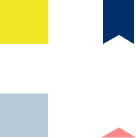
Background
I wanted to create a solution for users to more easily navigate the overwhelming problem of medical debt payment, so I designed and prototyped Parego.
Design Process
EMPATHIZE
Identify & frame the problem
Conduct user research
Build problem statements
DEFINE
Analyze competitors
Build user personas
Map user journeys
Write user stories
IDEATE
Create paper & digital wireframes
Build low-fidelity prototype
Conduct usability studies
Identify insights & recommendations
DESIGN
Develop high-fidelity prototype
Consider accessibility
TEST
Conduct second round of usability testing
Identify insights & recommendations
REPEAT
Takeaways
Next steps
Who is our user?
An initial round of interviews yielded three core user groups:
1) Heads of household managing bills for their immediate family
2) An individual managing their own medical bills, with particular emphasis on elderly individuals
3) An individual managing care for an elderly parent
Out of this preliminary phase evolved three user personas and their respective journey maps:
ISAIAH FRANKLIN is a new father and husband who needs to keep track of and pay off numerous medical debts because he and his wife just welcomed a baby girl with birth complications.
⬇
Out of this research I developed a problem statement to clarify the issue I was attempting to solve for:
People who feel frustrated about managing bill payments for one or more health-related appointments per month (for themselves or others) need to pay their health-related bills down, but doing so is a confusing endeavor. These bills usually arrive via snail mail, at variable times after the appointment or service was performed, with descriptions of service usually expressed in complex language that is usually lacking in accessibility.
ANNE METROS is an elderly individual who for the first time needs to keep track of and pay off her medical debts because her husband recently passed away.
⬇
MELINDA RASO is a professional and daughter who needs to manage numerous medical debts because she and her husband oversee the care of her elderly mother.
⬇
What might a solution look like?
From our user personas, I developed three hypotheses:
1) If Isaiah downloads the medical billing app, then he will be able to take advantage of its billing synthesis functionality to ensure he can keep track of and pay all his medical bills on time.
2) If Anne signs up for the medical billing app, then she will be able to view the clear explanation of services for each of her bills so she is confident that her bills accurately reflect the services she received.
3) If Melinda signs up for the medical billing app, then she can utilize its billing synthesis functionality to keep account of bills coming from various service providers regardless of where the service was performed, leading to increased ease around the task of medical payments.
In response to the research and feedback thus far, a number of value propositions began to emerge. I conceived that the app might offer the following functionality:
Easily keep track of all medical bills
Recommend a single monthly payment to the user, with behind-the-scenes management of payments to various providers
Create monthly payment plans
Link directly to bank account or debit/credit cards
Help users prioritize which bills need to be paid first to avoid collections
Indicate where the amount someone is paying for a bill falls relative to the average cost for that service
Negotiate lower amounts for bills
Provide reminders about payments






